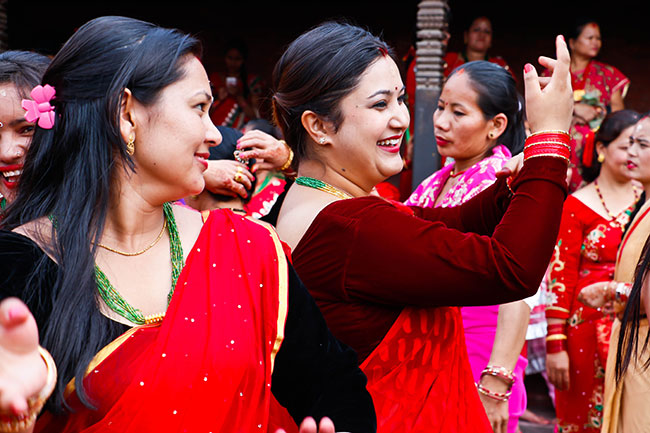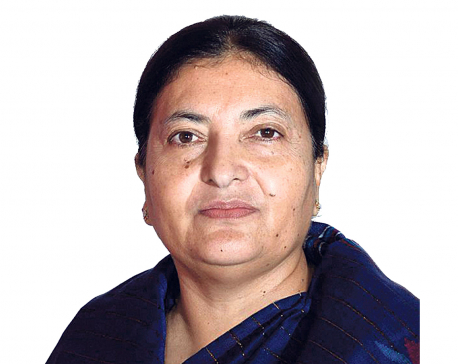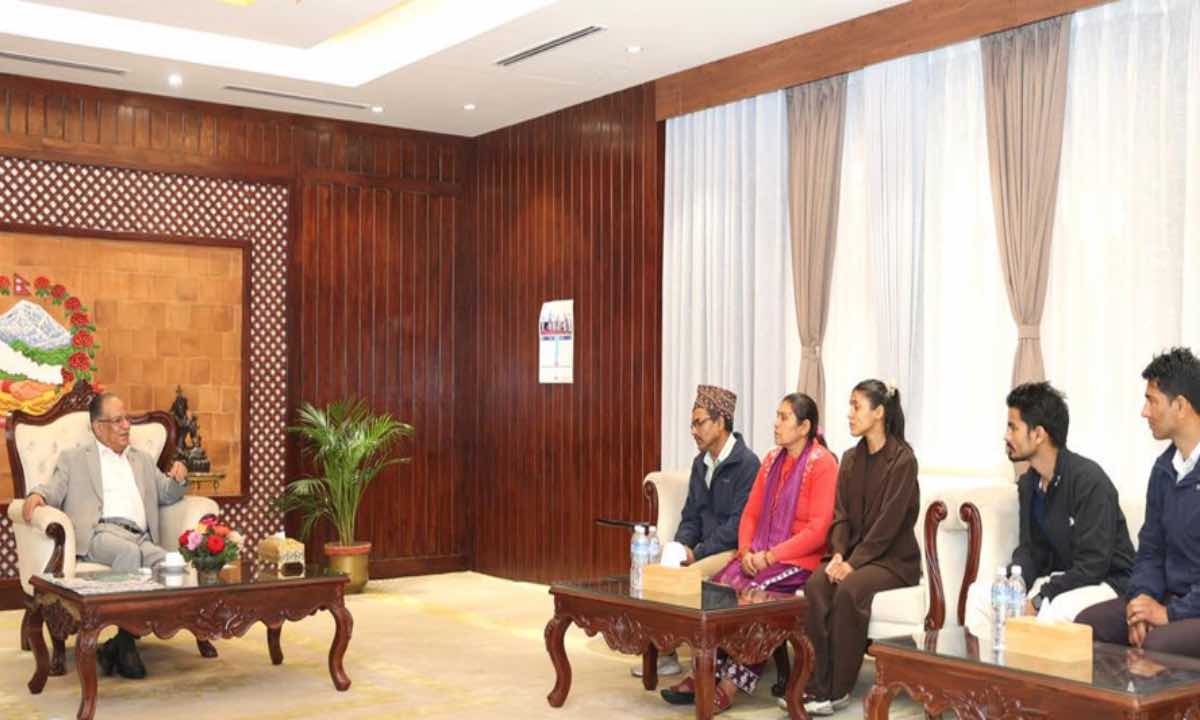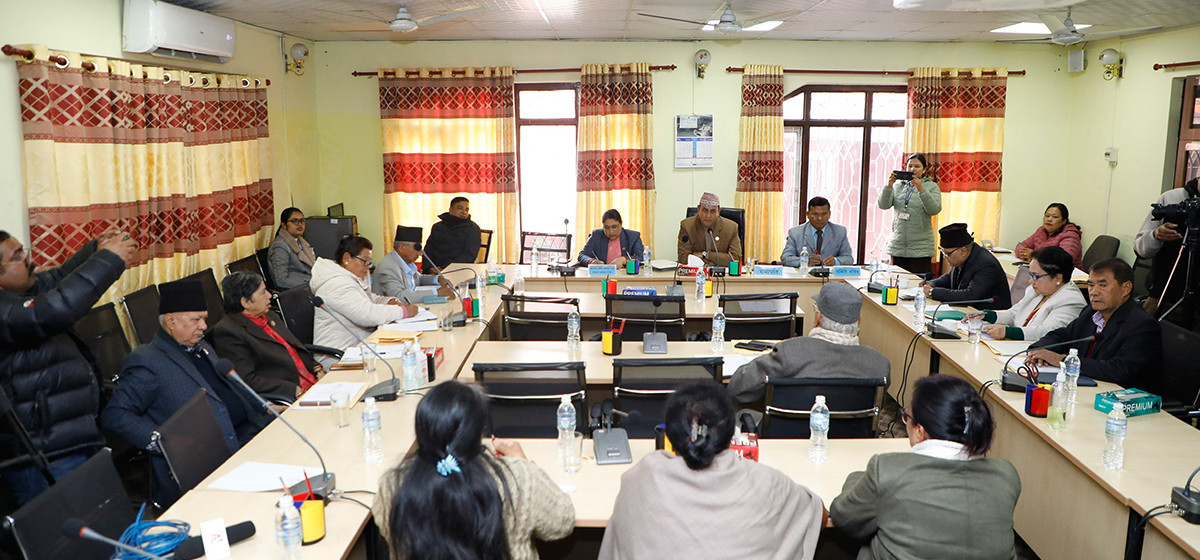
OR
My 65-year-old Fupu never married but she has fasted since her childhood. She didn’t do so to get a good husband
I remember my Ama (mother) crying as she read Swasthani Barta Katha to us where Lord Shiva is lamenting over the death of Goddess Sati Devi. When I later read as an adult to my 65-year-old Fupu (aunt), she and I wept together. Why? Because it was not a normal loss. It was the Supreme loss. It was the loss of the God. I couldn’t believe that the all-knowing, all-powerful, all- magical God, he, himself could undergo a suffering like this, perform an emotionally destructive rage, and at the same time bear with years and years of depression.
After the self-immolation of Sati Devi, she reincarnates herself as Parvati in human form and experiences human life before she takes a divine flight to unite with her husband. This unification happens after she concludes her fasting on the day of Teej. It is important to note that Parvati was not searching for a husband but was reuniting with her counterpart who was inactive. Parvati’s journey is a venture, meditation, setting aside all the humanly emotions, to be away from dualities of life and to unite with the divine in a feminine way of worship. Thus, the fasting of Teej and Parvati’s marriage to Lord Shiva are metaphorical representation of how the suffering of Sati Devi and depression of Lord Shiva only ended with feminine worship.
The big myth
According to the myth, Goddess Sati Devi self-immolates during the big Yagya (ceremony) organized by Dakshyaprajapati, her father, because 1) he didn’t invite Goddess Sati Devi and Lord Shiva, and 2) he insulted and mocked Lord Shiva. Lord Shiva in his rage orders a destruction of the Yagya! But he also carries the corpse of Sati Devi on his shoulder and wanders, in deep depression, for years. He remains inactive without Shakti who is Satidevi. Then Lord Bishnu supposedly takes a form of an insect to sting the dead body of Goddess Sati Devi, initiating decomposition.

The decomposed body parts of Sati Devi fall onto Earth (mostly in South Asia) to emerge as holy temples or Shakti Peeths. There are supposed to be 108 Shakti Peeths around South Asia, and some are in Nepal too. But that wouldn’t cure Shiva’s depression. He again meditates for years, again inactive. Now Lord Bishnu sends Kamdev (The God of eros) to hit Lord Shiva with his Kaam Ban, so as to evoke Lord Shiva’s eros. On the sideline, Goddess Sati reincarnates herself as Parvati. After Lord Shiva’s eros is evoked, he marries Parvati and unites with her to become Shiva-Shakti, and this happens after the fasting on the day of Teej.
Redefining Teej
The fast of Teej was supposedly suggested to Parvati by Lord Bishnu. This fast is highly regarded as it paved the way for the ultimate unification among Gods. And we through our fast, worship and rituals commemorate the unification of Shiva-Shakti, and human Parvati’s transformation to the divine Shakti. I started fasting on Teej when I was very young, and I used to be mocked by people who asked, “So, you are fasting to find a good husband”? The rhetoric of this festival is that “young women fast to get good husbands” and “married women fast for the longevity of the life of their husbands”. I personally believe that these two are false truths as Parvati was already married to Shiva when she fasted for him, and Shiva, who is eternal, doesn’t need to increase his life span.
Later, in my early twenties (after I started to know about Feminism), still continuing to fast, I would ask myself: Am I fasting to get a good man in my life? The answer would be a ‘NO’! I never did that. Similarly, my 65-year-old Fupu never married but she too has fasted since her childhood. She didn’t do so to get a good husband. Whom did we fast for if not for husbands then? We fasted to commemorate the unification of the Gods, we fasted to remember Sati Devi’s death, Shiva’s depression, their separation and their reunification reminding us how even Gods suffer tragedies and overcame them through feminine ways of divinity. And we through fasting, worship and rituals commemorate the unification of Shiva-Shakti, and human Parvati’s transformation to the divine or Shakti. Thus we need new ways to define what it means to fast on Teej.
Additionally, Teej also comes with Panchami Puja, which I used to criticize and not celebrate. But now I think that day of Panchami in Teej celebrates menstruation, the female power! It is a day to remember how we hold power to create life. This festival often regarded as “clearing of the sins” committed during menstruation also needs a redefinition because this festival is an acknowledgement that we menstruate and it should as such be a celebration of menstruation.
Philosophical pursuit
I redefine Parvati’s fast as not just physical transformation but also part of her philosophical pursuit as a human. Here, I want to bring my all-time favorite Lord Krishna. According to him, to have knowledge is to give up the dualities of life, emotions, and this knowledge paves the way to the divine. Sati Devi’s reincarnation as a human was a pursuit for knowledge. She experienced life as a human, suffering as a human, loneliness as a human, and in her own way she decided to give up all the emotions, dualities and took up this fast for the unification of Shiva and by taking the form of Shakti. She not only transformed into divine but also successfully ended the severe depression of Lord Shiva. She thus created a feminine way of achieving divine, made it simple for woman to be one with God, and made it all-woman festival that we commemorate till today.
While redefining Teej, I propose removing the ‘search for husband’ tag of this beautiful festival (I know many men who fast for their wives). Let’s celebrate this as commemoration of death of Goddess Sati Devi, depression of Lord Shiva, and a feminine way taken by Parvati to reclaim her position as a God.
Thus, with a festival like Teej, we are keeping alive the memory of Sati Devi’s sufferings and her philosophical pursuit both as a human and the God. Her pursuit should be valued, and her journey talked about, in terms of practicing divine feminine ways, not as a search for a husband. Never.
Also, we have our own ways of celebrating Teej: some sing of their pain, some dance away their suffering, some of us beautify ourselves. It is all about celebration and it can take any form! May this Teej bring you peace and may we all move away from ‘finding husband’ to finding ourselves through a divine pursuit.
The author is doing her PhD in Rhetoric and Composition from Purdue University, Indiana
You May Like This

Teej festival ensures robust social, cultural unity, President says
KATHMANDU, August 30: President Bidya Devi Bhandari has expressed the confidence that the Teej festival, also known as Haritalika, would... Read More...

Gold in short supply ahead of Teej
KATHMANDU, Sept 10: Gold is in short supply as the major festival season dawns nearer, jewelers say. ... Read More...

Teej talks
Every year we know that the Teej festival is near when we get to read about the new 'Teej' songs... Read More...




Just In
- Nepal face early setback as four wickets fall in powerplay against UAE
- Australian unemployment rate rises to 3.8 percent in March
- Gold price increases by Rs 700 per tola
- Fire destroys wheat crop in Kanchanpur, Kailali
- Bipin Joshi's family meets PM Dahal
- State Affairs and Good Governance Committee meeting today
- Gold items weighing over 1 kg found in Air India aircraft at TIA
- ACC Premier Cup semi-final: Nepal vs UAE














Leave A Comment